Science
Welcome to Old Garden Tools collection of Science Tools. We have laid our images out in museum style so that you may concentrate just on the images without any other distractions. Just hover over the image or click on it to see a larger version with some additional information.
Please contact us if you require further information.
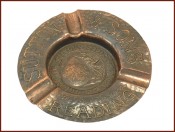 Ashtray A
Ashtray A
English. 20C. Copper Ashtray by ‘Sutton Seeds’. Impressed raised lettering ‘Sutton and Sons Reading. The King’s seedsmen. For all parts of the world’. with paired trade mark logos. 4.8 inches (12.5cms).
 Compass B
Compass B
Garden Compass. Dutch.
 Compass D
Compass D
French. Early 20C. Oak with brass axis and ferrules. Steel points. 51 inches (130cms).
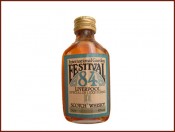 Container N
Container N
A prize at the 1984 International Gardens Festival in Liverpool UK. Plastic paper metal and whiskey.
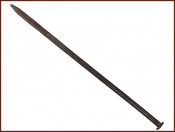 Crowbar A 1
Crowbar A 1
English. Circa 1900. Wrought Iron Crowbar. 36 inchesv (91.4cms).
 Dendrometer A
Dendrometer A
English. 1900 – 1905. Stamped ‘Dring & Fage. Makers. London’. For tree measurement. Steel. Brass slider with inserted bent steel spring. Engraved inch measurements. Lignum vitae handle.
John Dring and William Fage established their company at various addresses in London England, and flourished from 1790 – 1940. They were makers of mathematical, nautical and excise instruments and produced a wide range of instruments that may be seen in many museums. In 1850 the company while retaining the name Dring & Fage was now run by Edward Hall and Edward Jenkin.
Their addresses were:
6 Tooley Street, London Bridge, Borough, Southwark (1792-96);
248 Tooley Street, Southwark (1796-1804);
20 Tooley Street, Southwark (1804-44);
19-20 Tooley Street, Southwark (1846-60);
145 The Strand (1883-1902);
56 Stamford Street, S.E. (1903-38);
< a href="/wp-content/uploads/catablog/originals/Dendrometer--A--1.jpg" target="_blank">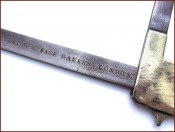
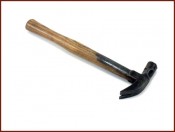 Hammer A
Hammer A
English. 20C. Claw Hammer with lateral strapping embossed ‘5’ on head. Ash handle. 13.75 inches (35cms) x 5 inches (12.5cms).
 Hammer B
Hammer B
Chinese. Late 20C. Multitool. Black painted steel. Combined hammer axe jemmy. Ash handle. Stamped ‘Swordfish Brand with logo. Made in China’. 13.5 inches (35cms) x 5 inches (12.5cms).
 Hammer C
Hammer C
English. C1900. Garden Hammer.
 Hammer E
Hammer E
English.Early 20C. Steel strapped head with cross hatched striking plate. Engraved ‘C T Skelton & Co. Sheffield’. Ash shaft with circumferential tooling and carved knop. Ref; Carters Blue Book 1934. Sold in 3 sizes. 9.75 inches (25cms).
 Hammer F
Hammer F
English. C19C. Steel strapped head with cross hatched striking plate and possibly engraved ‘Brades & Co’. Beech shaft with carved knop.
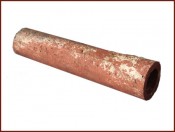 Land Drain
Land Drain
Georgian English from Old Basing UK. Terracotta. ref FT&T p19
 Rain Gauge A
Rain Gauge A
English. Late 19C. Made and sold by E Lennie. 46 Princes Street. Edinburgh.1840 – 1921. Copper and steel with enamel face and 2 fixing brackets. Enamel faint mark where was written E Lennie. No….
This example not stamped on body but sister example is stamped on copper; ‘Lennie. Edinburgh. No.G20129 ‘. and on face; ‘Lennie. Edinburgh. No.G20129’.
Restored 2012. 2 buckets fill and empty alternately so turning the clock mechanism.
 Scribe A
Scribe A
Wrought tanged steel blade and beech handle with ‘M.B’ burned in. 8.75 inches (22cms).
 Seed Balance A
Seed Balance A
English. Early 20C. Sutton and Sons. Assembled by a Sutton’s employee Mr W J Main in 1969 as labelled by 2 ‘Serpent Labels’. Hand Balance with Weights in mahogany box. Sutton & Son was established in Reading in 1837 by John Sutton and his son, Martin Hope Sutton. 2000 people worked at the ‘Royal Seed Establishment’ by 1901. In 1974 the company moved to Torquay.
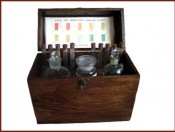 Soil Analysis Kit
Soil Analysis Kit
English. 20C. Wooden hinged box.
 Soil Analysis Kit B
Soil Analysis Kit B
British. 1951. The Analoam Soil Indicator. Boxed kit containing 2 vials of indicator liquid, chart and leaflet by the supplier ‘The National Allotment and Gardens Society Ltd’. Box 4.3 inches (11cms).
 Soil Sampler A
Soil Sampler A
English. 20C. Soil Sampler. Aluminium cutting tube fitted to ash T-handled stem. 28.5 inches (72.5cms).
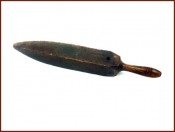 Strickle
Strickle
English 20C. Wooden Scythe sharpening tool carried on the belt, greased and dipped in sand to form abrasive surfaces.
 Strickle B
Strickle B
Early 20C Strickle. Long worn 4 sided whetstone. Highly polished dark beech handle. 13.75 inches (35cms).
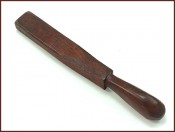 Strickle C
Strickle C
20C. Hardwood strickle carved from the piece. 12.8 inches (32.5cms)
 Terrarrium Scissors A
Terrarrium Scissors A
Chinese. Agent in Holland. Terrarium Scissors 2021. Affixed to card. 10 inches (25cms).
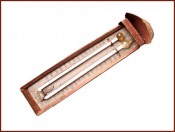 Thermometer A
Thermometer A
English. 20C. Rusted steel and zinc grade plate and engraved numbers. Weather flap and hanging hole. Mercury broken. Spirit intact. 10.25 inches (26cms) x 2.5 inches (6cms).
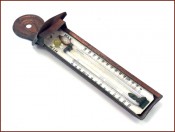 Thermometer B
Thermometer B
English. 20C. Brass and plastic grade plate. ‘British Made@. Hanging hole and weather flap. Broken mercury thread. Spirit intact. 11 inches (26cms) x 2.6 inches (6.5cms).
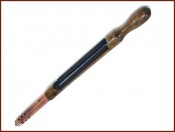 Thermometer C
Thermometer C
English. 20C. ‘Brannan. London. Hot Bed’. Laquered perforated brass cylinder, brass gauge, wood handle. 16.5 inches (41.5cms).
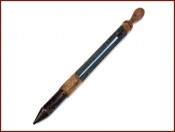 Thermometer D
Thermometer D
English. 20C. ‘Sutton & Sons Ltd. Seedsmen. Reading’. Perforated brass cylinder and oak handle, steel gauge and mercury. Sutton & Son was established in Reading in 1837 by John Sutton and his son, Martin Hope Sutton. 2000 people worked at the ‘Royal Seed Establishment’ by 1901. In 1974 the company moved to Torquay. 15.5 inches (39cms).
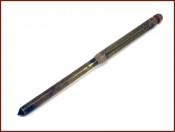 Thermometer E
Thermometer E
English. Mid 20C. ‘Accoson’ Made in England for BMI Ltd. Perforated brass cylinder, beech handle, red alcohol. 18 inches (46cms).
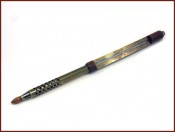 Thermometer F
Thermometer F
English. 20C. Perforated brass cylinder, brass gauge, hanging eye, varnished wood handle, mercury, lignum vitae tip. 21 inches (53.5cms).
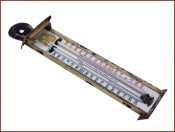 Thermometer G
Thermometer G
English. C1900. Steel and Perspex with weather flap. Mercury and spitit intact. ‘Elliott Bros 101 St Martin’s Lane London’. 16 inches (40.5cms) x 3.5 inches (9cms).
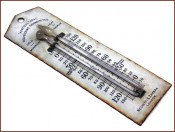 Thermometer H
Thermometer H
English. C1900. Negretti & Zambra. London. max Min. ‘Horticultural’ Registering Thermometer. Steel. Rear rusted black enamel. Front rusted white enamel. Mercury intact. 10.6 inches (27cms) x 3.3 inches (8.3cms).
Philo a Jewish philosopher in Egypt at the height of the Roman Empire invented the Thermometer. Galileo Galilei invented the Thermoscope in 1593 which showed changes in air temperature and Santorio Santorii calibrated such a device in 1612. Ferdinando Il de’ Medici invented the first liquid in glass device using alcohol in 1654. Fahrenheit invented the mercury thermometer in 1714 and perfected it in 1724.
 Tool Rack A
Tool Rack A
Victorian. Tool wall Rack. 4 positioned holders. Cream and brown painted steel. 47.25 inches (120cms).
 Wimble A
Wimble A
English.Circa 1900. Ash and wrought iron. Throw-Crook. Used for twisting straw to make rope.
 Wimble B
Wimble B
English.Circa 1900. Wrought iron. Throw-Crook. Used for twisting straw to make rope.
 Wimble C
Wimble C
English.Circa 1900. Throw-Crook. Beech and wrought iron. Used for twisting straw to make rope for harvested corn.
 Wimble D
Wimble D
English.Circa 1900. Wrought iron and metal tube. Estate made. Throw-Crook. Used for twisting straw to make rope.

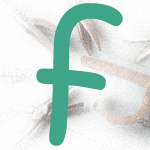

 Chrysanthamum Forceps A
Chrysanthamum Forceps A
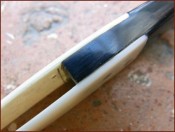
 Compass A
Compass A
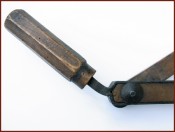
 Compass C
Compass C
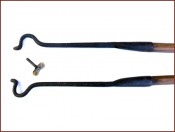
 Compass E
Compass E
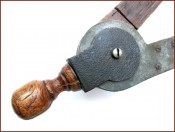
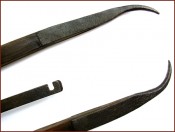
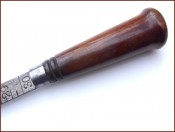
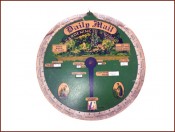 Garden Calculator
Garden Calculator
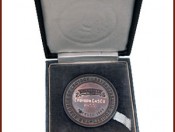 Medal A
Medal A
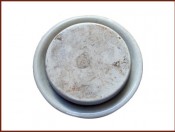 Orchid Stand A
Orchid Stand A

 Pipe Laying Hook A
Pipe Laying Hook A
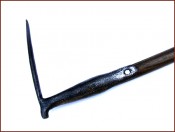

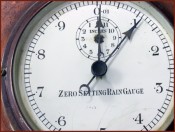
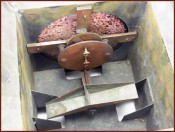
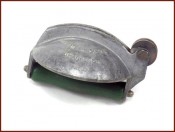 Scythe Sharpener
Scythe Sharpener
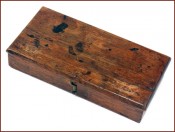
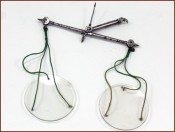
 Soil Sampler B
Soil Sampler B
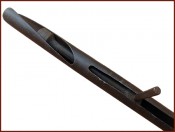
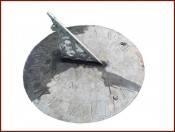 Sun Dial
Sun Dial
 Topiary Calipers A
Topiary Calipers A
